Any art expert will agree that medieval architecture would not have been the same without the Camino de Santiago. For instance, the cathedral of Santiago de Compostela itself is an innovation in medieval art: the pilgrimage church. Besides it, on the Jacobean routes, we will find many other examples of temples that have much to tell. Thus, we are going to visit the most impressive cathedrals and churches on the Camino de Santiago.

The origin of the Camino de Santiago is linked to religion
Cathedral of Santiago de Compostela
The Cathedral of Santiago de Compostela is, for obvious reasons, the most important, as it houses the remains of the Apostle Santiago and is the origin of everything. Therefore, it is not only a cathedral, being the seat of the bishopric, but also a basilica, as it contains relics. Located in the historic center of Santiago de Compostela, presiding over the Plaza del Obradoiro, it is the goal and kilometer 0 of all Jacobean routes.
The Apostle’s remains were discovered around the year 813 in a small Roman-era mausoleum on the well-known Monte Libredón. Following this event, King Alfonso II “the Chaste” ordered the construction of the first stone and mud chapel next to the mausoleum. In the year 834, the chapel became the episcopal seat. Around it, the first settlers and Benedictine monks established themselves.
In the 9th century, King Alfonso III built a larger temple, which was destroyed in 997 by the Muslim leader Almanzor. In 1003, Bishop San Pedro de Mezonzo ordered its reconstruction in pre-Romanesque style.
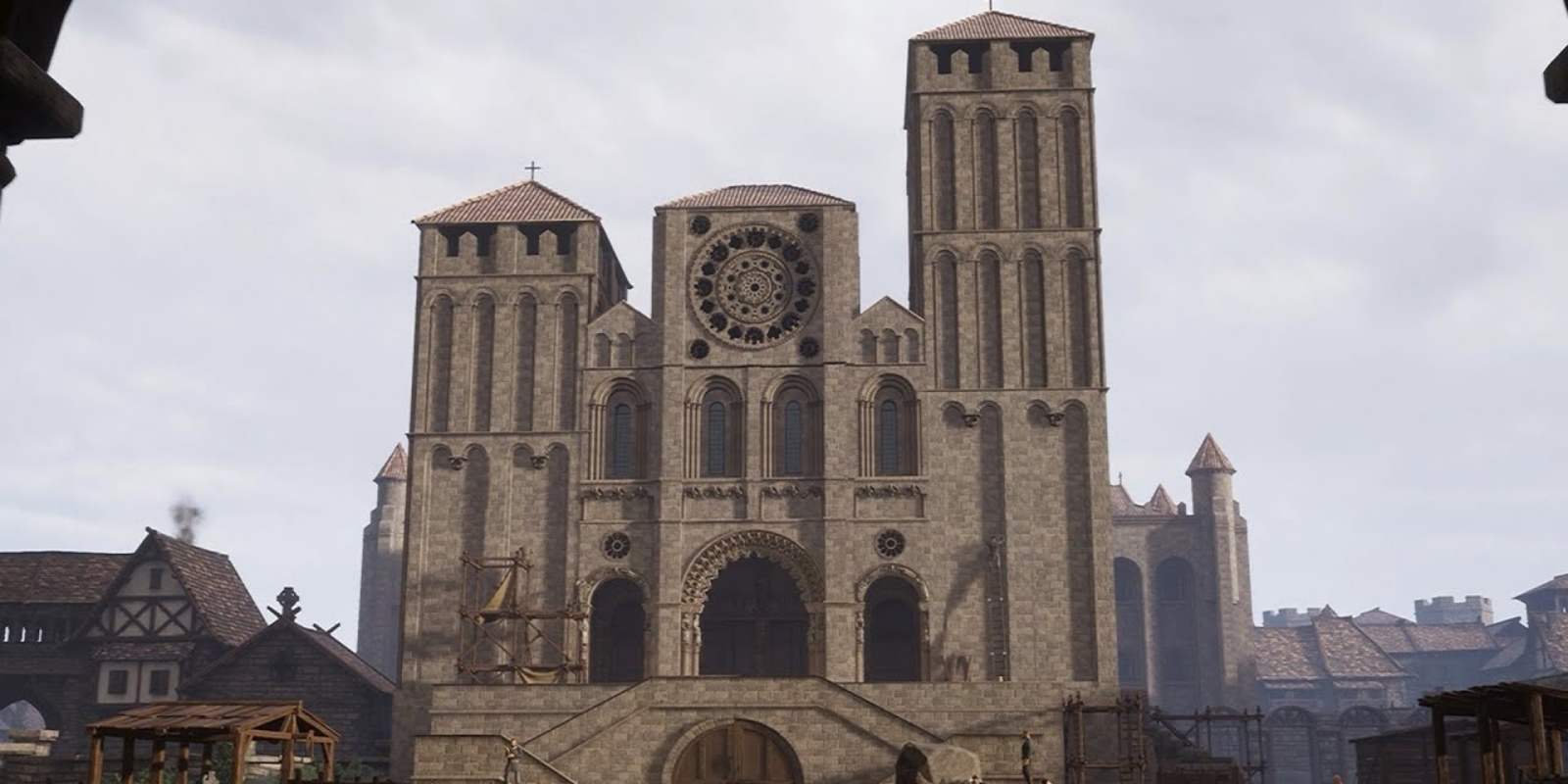
Recreation of the main facade and the cathedral in medieval times
Finally, in 1075, they began to build the current Romanesque cathedral thanks to the wealth and importance of pilgrimages. King Alfonso VI and Archbishop Diego Gelmírez promoted this construction. The famous sculptor Maestro Mateo completed the last sections of the naves, the western towers, and the Portico of Glory. Thus, the Romanesque construction of the cathedral was considered finished by the early 13th century.
Over time, Gothic, Renaissance, and Baroque elements were added, although the structure of the naves remained almost intact. Highlights include the Clock Tower, the Renaissance cloister, the Baroque wrapper of the entire complex, and, of course, its impressive main facade from 1750.
Pilgrimage church model
The cathedral’s plan is in the form of a Latin cross with three naves, a transept, a dome over the crossing, and a main altar with an ambulatory and deambulatory. This overall design and the latter element, around the altar, the tomb, and the Apostle’s shrine, where his statue is embraced, are innovations. And this Romanesque cathedral was designed to be a great place of pilgrimage, that is, to accommodate crowds of pilgrims. This deambulatory allows the transit of pilgrims to visit the tomb, as it does today. Additionally, its large dimensions and its gallery over the side naves allow shelter for pilgrims, who used to sleep inside.
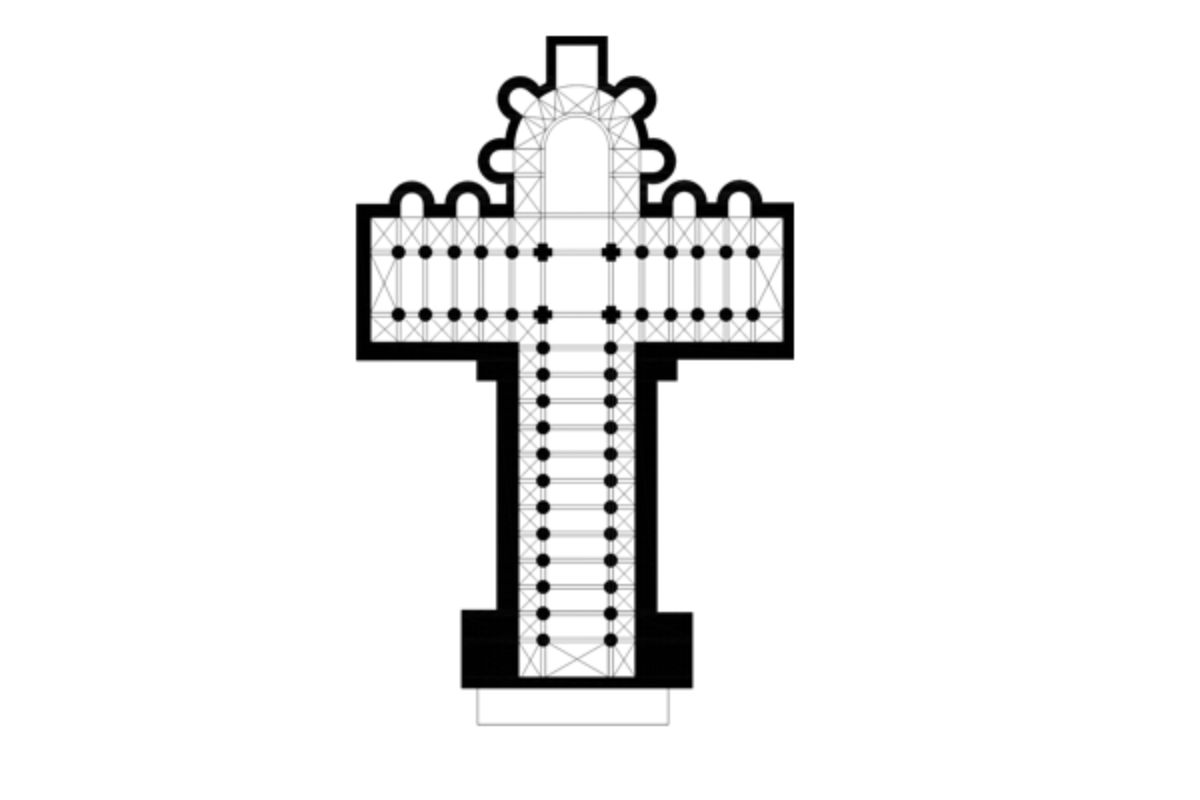
The floor plan of the cathedral of Santiago de Compostela is a model of a pilgrimage church
The cathedral is surrounded by four plazas oriented like a compass, with the Obradoiro to the west. The northern Azabacherías presents a facade rebuilt in the 18th century, while the southern Platerías is the only Romanesque facade we preserve. Finally, to the north, Quintana Plaza houses the Holy Door, which only opens in Holy Year, and the Berenguela Tower.
Cathedrals to visit on the French Way
The French Way, as the main pilgrimage route to Santiago, is an open book of art history. Let’s get to know the cathedrals we can visit on the French route.
Burgos Cathedral
The Cathedral of Santa María de Burgos, in the historic center of the city, is the first representative of Gothic architecture in Spain. Dedicated to the Virgin Mary, it has incorporated various artistic currents throughout history, mainly Renaissance and Baroque.
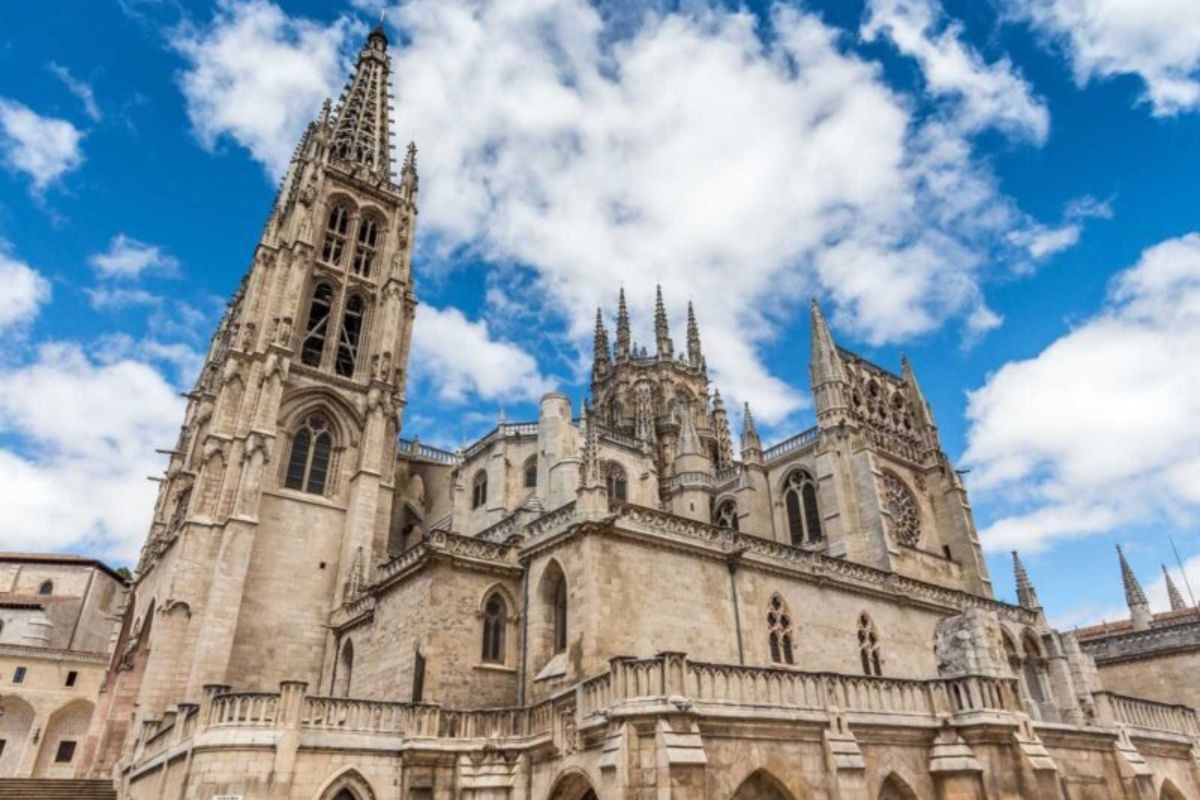
Exterior of Burgos Cathedral
With a Latin cross plan, the construction of the cathedral began in 1221 with French Gothic patterns. It has two clear phases: the classical Gothic of the 13th and 14th centuries, and the flamboyant Gothic led by the Colonia family. Its construction, over four centuries, reflects the creative genius of architects, sculptors, and artisans.
Among the standout elements, we can cite several. The spires of the main facade, the dome, the Chapel of the Constables of Castile, the Golden Staircase, and the Sarmental and Coronería doors are some of them. However, it is worth noting that it houses the tomb of El Cid and his wife Doña Jimena, thus integrating into the history of the Reconquest of Spain.
But the star is perhaps the Papamoscas clock, an 18th-century automaton that replaces a 16th-century one, although it is documented in medieval times. Every hour on the hour, it opens its mouth and moves its arm to strike a bell. Located 15 meters high, in the window above the triforium of the main nave, it is a half-body figure dressed in courtly attire.
Declared a World Heritage Site by UNESCO in 1984, it is the only Spanish cathedral with this distinction independently of the historic center as a whole.
León Cathedral
In the historic center of León, we find this cathedral, the first monument in Spain to be declared a Site of Cultural Interest, specifically in 1844. It is known as Pulchra Leonina, the “Beautiful Leonese”, perhaps due to the ethereal and light character that its stained glass windows bring to the ensemble.
Built in the Gothic style on a site with much history between 1205 and 1301, the building has a cruciform basilica plan. It is said to be “the most French cathedral in Spain”, as it has much influence from French radiant Gothic.

The stained glass windows of León Cathedral give an immaterial character to the temple
Many legends surround it, such as the legend of the mole. It is said that a small malicious mole would destroy each night what was built during the day. The Leonese, very upset, waited for it at night and caught it. They say the skin of this mole hangs inside the building.
Cathedral of Santo Domingo de la Calzada
This cathedral, dedicated to the Savior, is located in the historic center of Santo Domingo de la Calzada. Built in the 12th century, it gained cathedral status in the 13th century and had later reforms and additions. Begun in Romanesque style, Gothic is also present in much of the complex.
With a Latin cross plan, it stands out for its deambulatory, which, like in Compostela, is a characteristic of pilgrimage churches. In its corresponding transept, to the right, stands the tomb of Santo Domingo, from the 16th century. As with many medieval constructions, more than 30 mason marks can be seen scattered across the building’s walls.
Cathedrals and churches not to be missed on the Portuguese Way
The Portuguese Way also has much history and tradition, and it is not lacking in noteworthy temples that we highlight below.
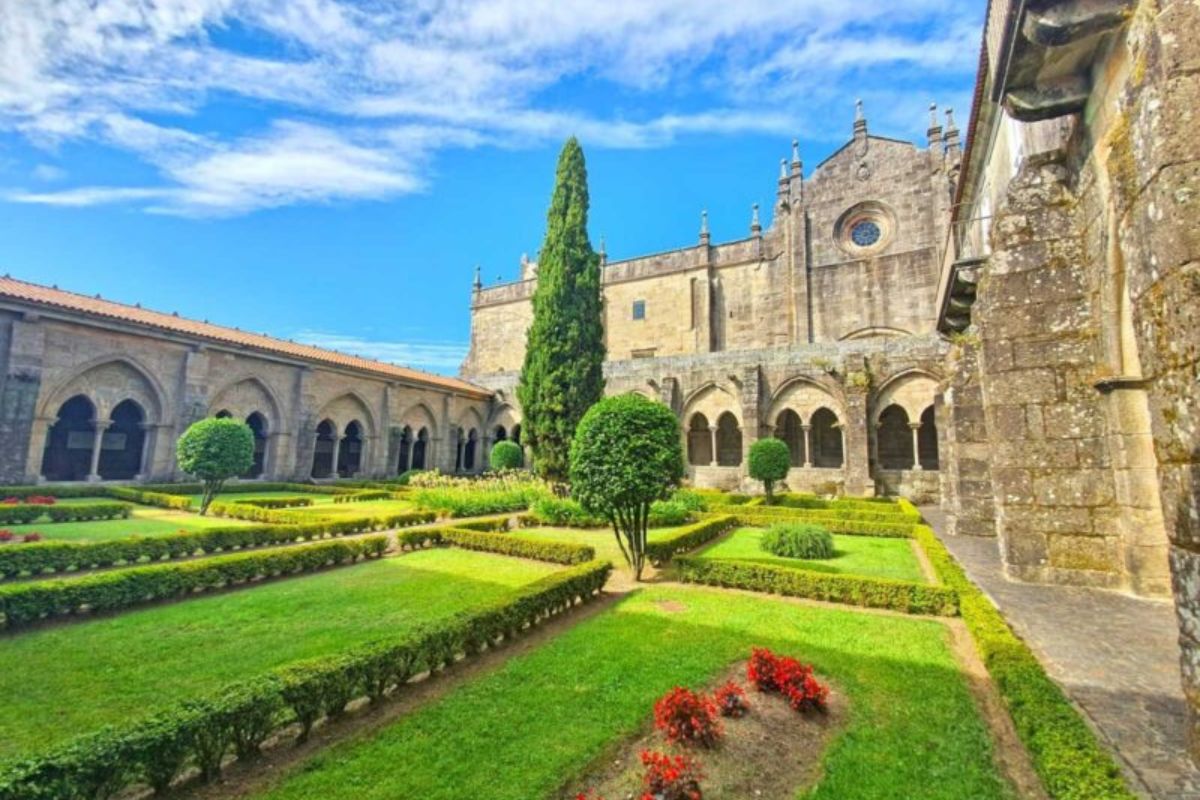
Cloister of Tui Cathedral
Tui Cathedral
Located in the historic center of the border city of Tui, this cathedral stands on a promontory. Being in a border city, the building has crenellated elements that speak of its defensive past.
Built in the 12th century in Romanesque style, its Gothic facade, from the 13th century, stands out as it is an unusual style in Galicia. With a Latin cross plan, it is inspired by Santiago Cathedral. Among its Romanesque elements, the imagery work on the capitals of the columns stands out.
Basilica of Santa María la Mayor in Pontevedra
This basilica, located in the old town of Pontevedra, was built in the 16th century in the Isabelline Gothic style, with Plateresque elements. It should be noted that its construction was promoted by the Mareantes Guild of the city, the oldest guild in Spain dedicated to the sea. With a basilical plan, it is worth mentioning that its facade features the busts of Christopher Columbus and Hernán Cortés, located on either side of the rose window.
What cathedrals can I see on the Primitive Way
The Primitive Way, whose history places it as the first of the Jacobean routes, also offers exquisite examples of religious architecture.
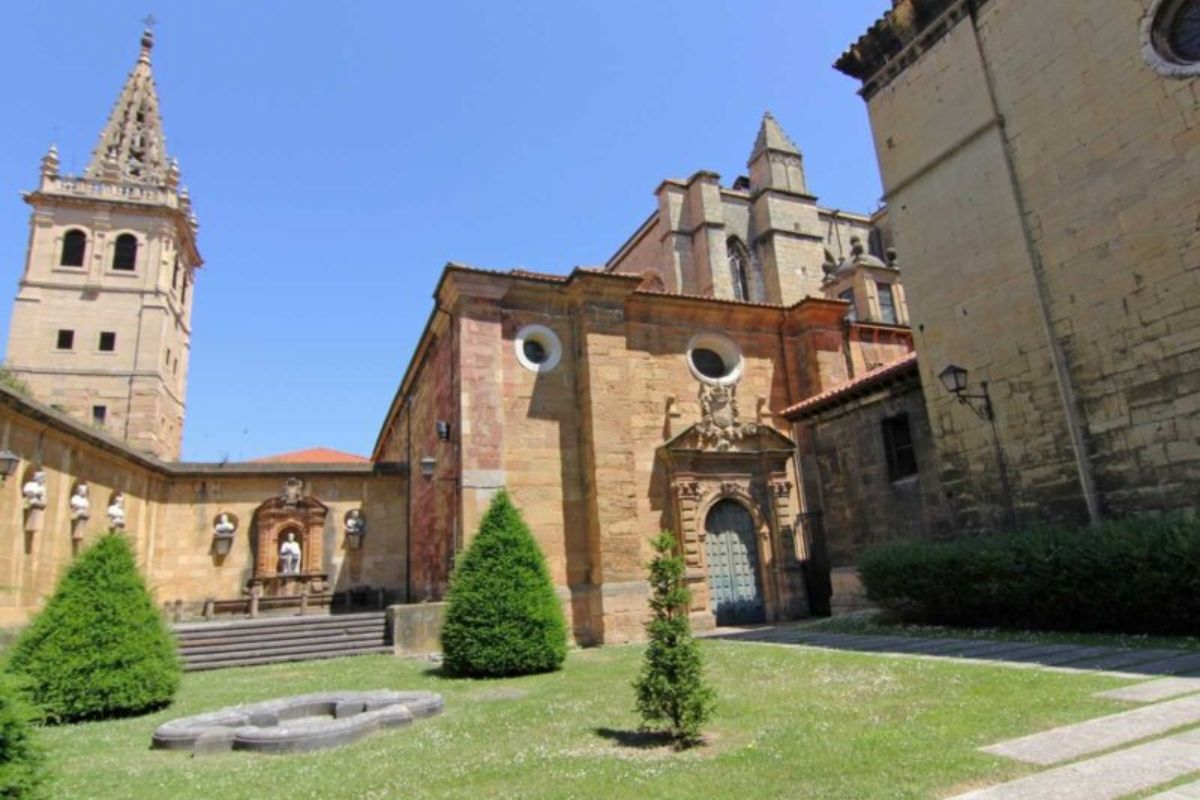
Oviedo Cathedral
Oviedo Cathedral
Located in the old town of the Asturian capital, it is known as Sancta Ovetensis for the quantity and quality of relics it houses. Built from the 13th century in Gothic style, it has a Latin cross plan and later additions.
The Holy Chamber, a palatine chapel that is part of the complex and houses very important relics, stands out. The Holy Ark, the Holy Shroud, the Victory Cross, the Angels’ Cross, and the Agates’ Ark are some examples.
In addition to being the start of the Primitive Way, it is also the destination of pilgrims on the Camino del Salvador, which begins in León.
Lugo Cathedral
This building, located in the historic center of the city of Lugo and within its Roman wall, has a Romanesque foundation. Its construction began in the 12th century, although it has later additions and other styles, as seen in its neoclassical facade.
With a Latin cross plan, the temple holds the papal privilege of permanently exposing the Blessed Sacrament. Also noteworthy is the image of the Virgin of the Big Eyes, the city’s patron.
Other gems not to be missed
On the Vía de la Plata, the Sanabrés Way, or the Northern Way, we also find examples of impressive religious constructions.
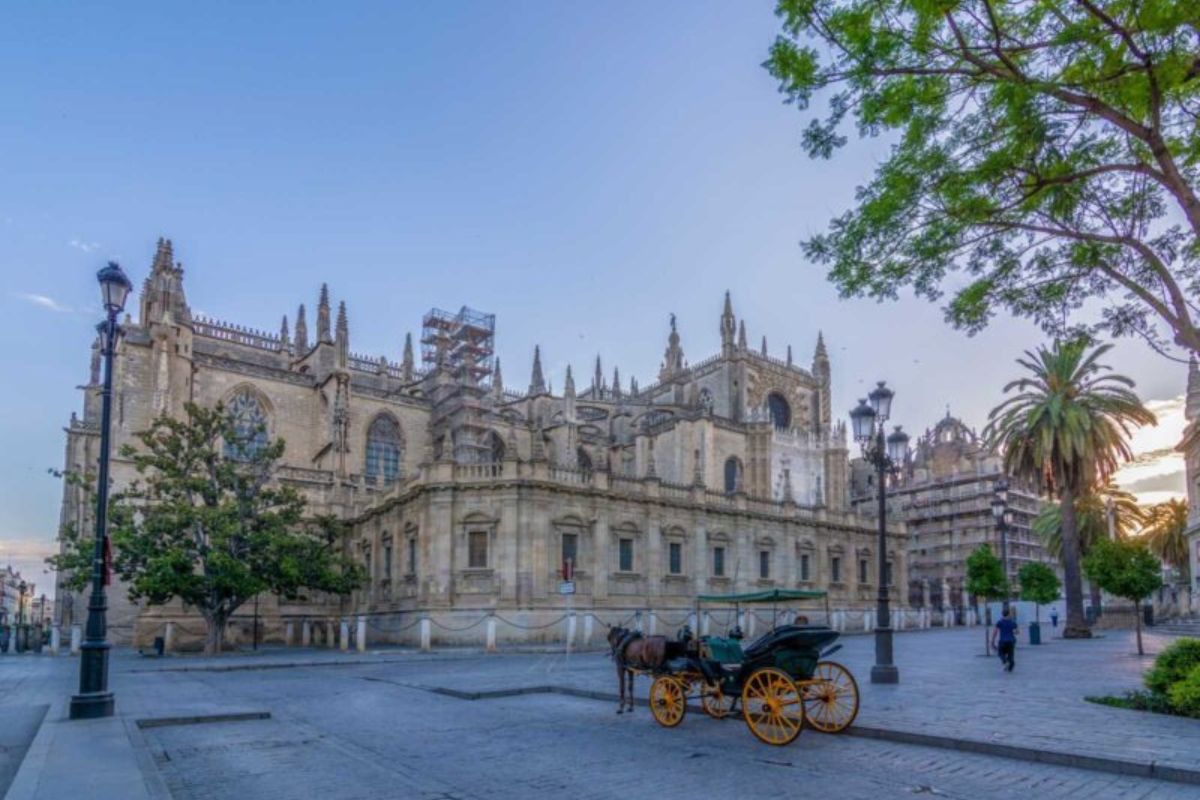
Exterior of Seville Cathedral
Seville Cathedral
Erected in the historic center of Seville, already in the 12th century it existed as a great mosque, as at that time the Muslims dominated Al-Andalus. In the 15th century, the Chapter decided to build a Christian temple in Gothic style. It is the largest cathedral of this style in the world and the third largest in all of Christendom. As a distinctive element, among many others, its mythical tower and bell tower stand out in the city’s skyline, the Giralda of Seville.
Ourense Cathedral
Located in the historic center of Ourense, it was built between the 12th and 13th centuries in Romanesque and Gothic styles, with later reforms and additions. A must-visit is its Paradise Portico, clearly influenced by Compostela’s Portico of Glory, although made a century later. Here we also find a seated statue of Santiago presiding over the mullion.
Bilbao Cathedral
Located in the city’s historic center, its construction dates between the 14th and 15th centuries, with later reforms and additions. In the Gothic style, it has a basilical plan and stands out for its small size for a cathedral. Mention should be made of its Angel’s Door, traditionally known as the Pilgrims’ Door, and indeed a scallop shell crowns this access.
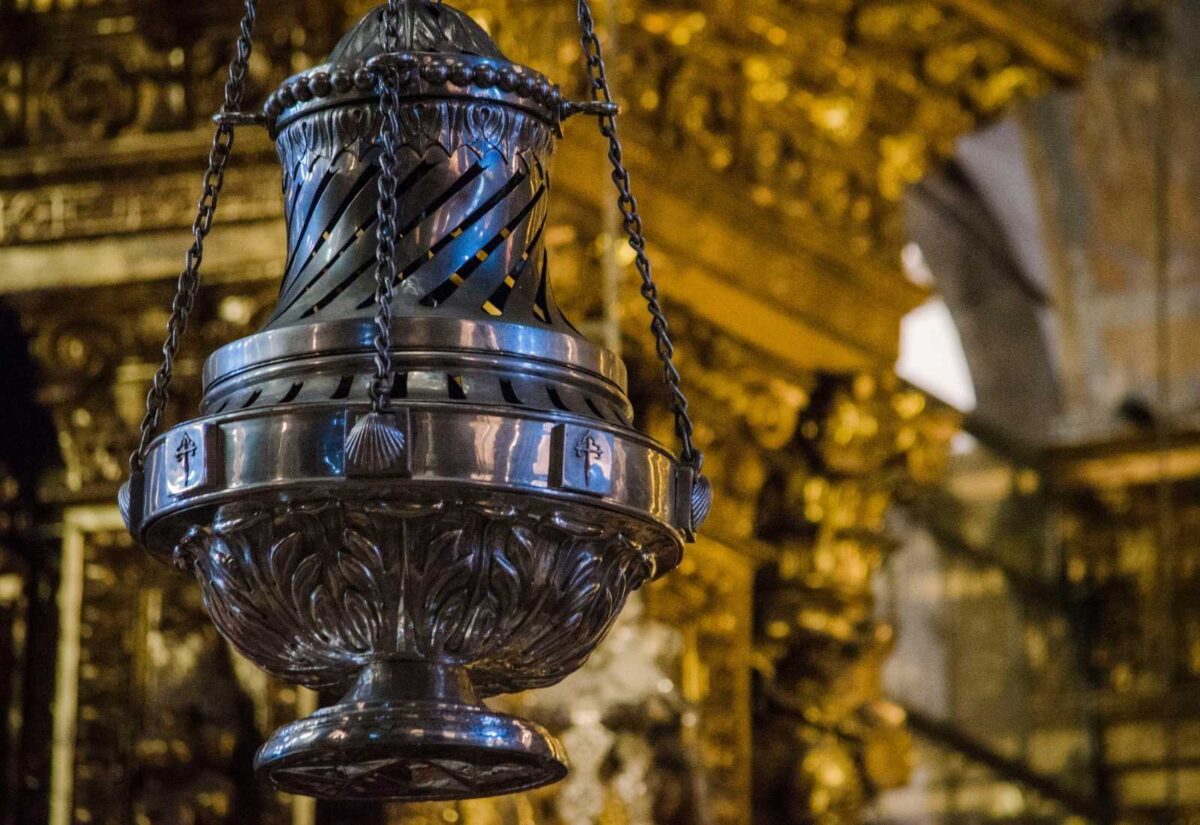
At the end of the Camino de Santiago, you may have the luck to see the Botafumeiro fly in Santiago Cathedral
Disconnect and experience different vacations with Viajes Camino de Santiago
A journey to the Camino invites you to explore the most impressive cathedrals and churches on the Camino de Santiago, witnesses of centuries of history and art. Embark on this cultural and spiritual adventure, travel its routes, and be amazed by the architectural richness of each destination. Start your pilgrimage and live an unforgettable experience on the Camino de Santiago!

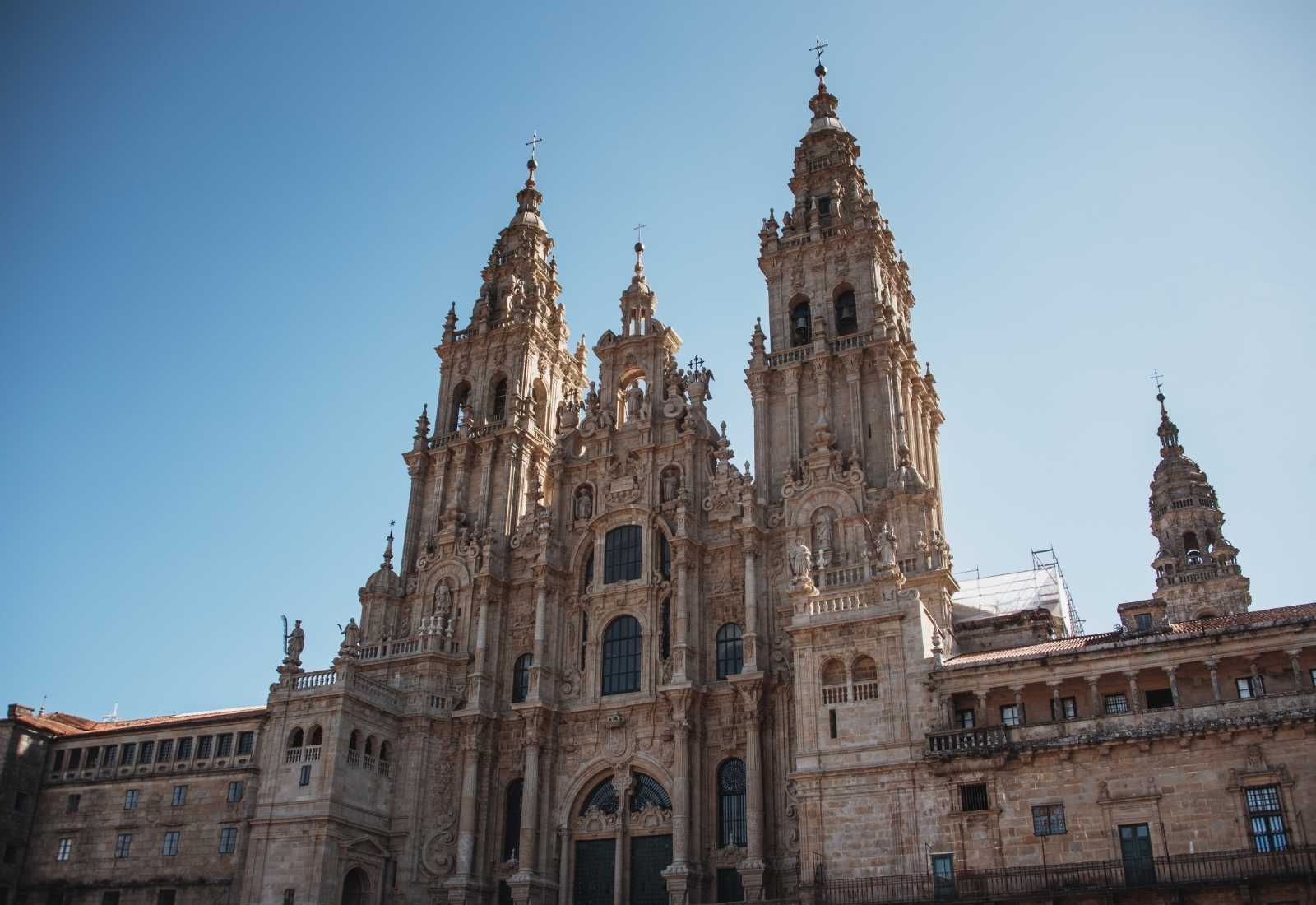


Leave A Comment